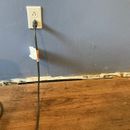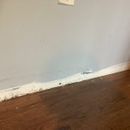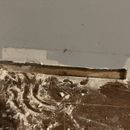Black mold behind baseboards in basement
Hello,
I removed the baseboard in the basement and saw that most walls had spots of black mold behind the baseboard. I am pretty sure that the wall base plate is not pressure treated wood (I removed a small part of the drywall to see). I am not too sure how to address this. I was thinking of removing a couple inches at the bottom of all the walls to allow for more breathing, but I read that this may be a fire hazard (reduces the firewall property of the drywall). What would you do with that?
Thanks
Louis
GBA Detail Library
A collection of one thousand construction details organized by climate and house part














Replies
Mold needs three things to thrive: a source of moisture, not necessarily liquid water; temperatures roughly 50°F-80°F, and a food source, which is everywhere and not something you can control. You can band-aid a solution but it's far better to address the cause of the problem.
In your case, you likely have a slab without insulation and/or without a vapor retarder. The lack of insulation keeps the floor and bottom of the wall cool, which increases relative humidity, providing the moisture source. The lack of a vapor retarder allows moisture in the soil to diffuse upward into the living space.
The best solution would be to add insulation and a vapor retarder; that's why we use those on new construction. (Edit: not everyone insulates slabs, as it's not required by code, but this is why conscientious builders do.)
A band-aid solution would be to use a dehumidifier to keep the space dry; how dry depends on several factors but certainly below 50% relative humidity, and preferably lower. And keep the space heated to 68° or higher all of the time, which helps things dry out.
Even then, you will likely continue to have mold growth unless you are willing to add insulation and a vapor retarder.
I had a similar problem with last year on relative's house. Several problems: (1) grade was going toward the house; (2) downspouts from the gutters assumed water flowed up-hill; (3) concrete settled and as directing water toward the foundation wall. (4) windows were buried by unknown person who I refer to as "flippy".
Mold/mildew was removed by scrubbing the walls and floors with bleach and TSP. Use two applications wait to dry and then apply KIlz to kill any spores.
Purchased a new dehumidifier and set it to 40% RH. Be sure to clean filters every 3 months.
Water problem was addressed: regraded around foundation so water flows away; dug trenches using a dingo and buried plastic down-spouts, so water was brought about 20-feet from foundation; removed concrete so storm water flowed away and then into the ground. I also sealed up cracks in the foundation using a cement caulk for masonry.
We had 7.0 inches of rain in June; still have water pooling outside the house - but not into the basement. Will use GBA drawing for a curtain drain - to improve drainage. Other plans are to remove more "settled" concrete and replace it with 12 inches of drainage stone and permeable pavers.
As Micheal indicated - you need to determine the source of moisture - bulk water, condensation.
Good point, Bill--always address stormwater management first!